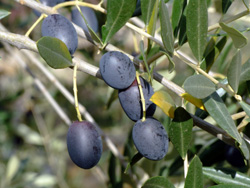Effect of olive mill wastewater on soil properties
NEWTECHOMW carried out an investigation into the effect of OMW on the chemical and biochemical properties of soil. Changes in enzyme activity within soil samples treated with two different OMW/soil ratios were measured over different time periods. The toxic effects of treated and untreated soil on plant growth were also studied by carrying out germination tests. The results showed that several activating or inhibitory affects occurred simultaneously. Chemical transformation of phenols in the OMW was catalysed by iron and manganese present in the soil, reducing the toxic effects on plant growth. When the two different OMW/soil ratios were examined, no significant differences were found in their chemical and physical properties. However, the results for biochemical properties showed that enzyme activity varied considerably over time between those soil samples treated with OMW and those left untreated. Tests were carried out on the properties of soil following treatment with OMW before and after samples were detoxified to reduce their phenol content. The results showed that there was less activity for most enzymes analysed in soils treated with detoxified OMW, which had lower phenol content. This is compared to those samples of soil which contained untreated OMW. The germination tests indicated that the soil environment was less favourable to plants growing in the medium with the highest OMW/soil ratio. In contrast there was only a 20% reduction in germination when the lower OMW/soil ratio was used. In addition, the use of OMW where phenols have been removed was less detrimental to the properties of soil than using untreated OMW.







